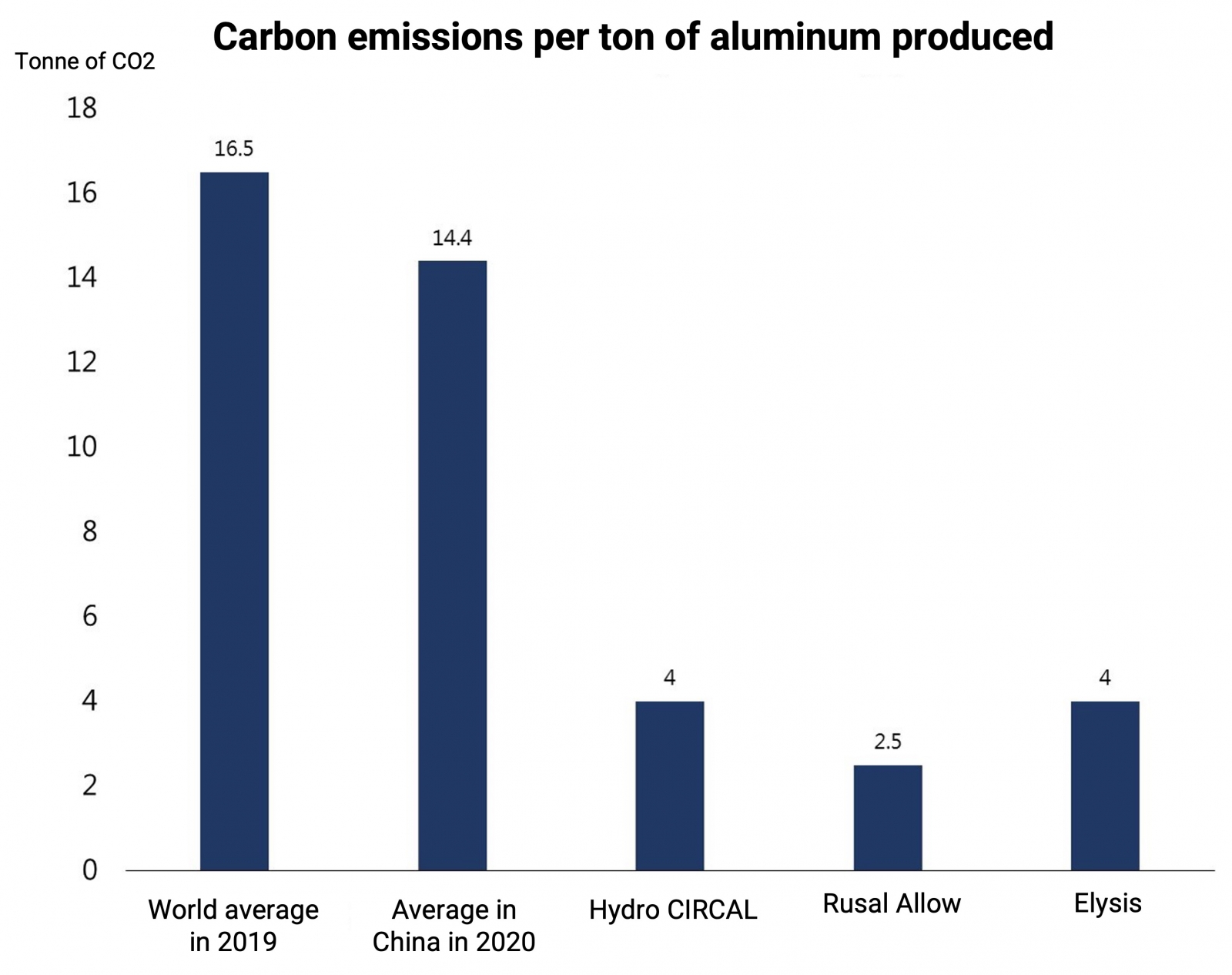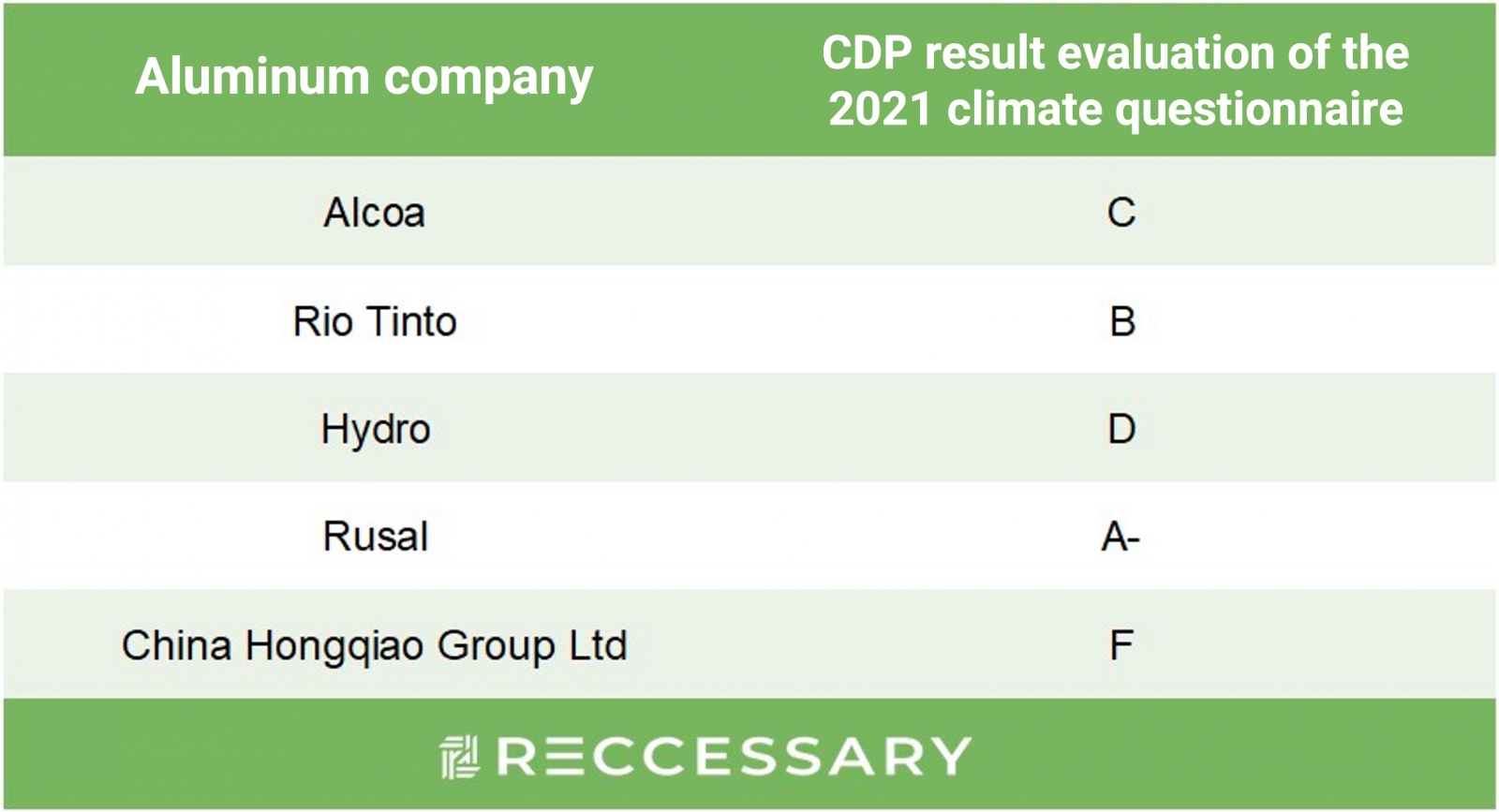Global carbon emissions of the aluminum industry
Carbon emissions from aluminum production account for about 0.8% of global greenhouse gas emissions. As demand rises, reducing emissions from aluminum production processes is gaining more attention. There are two major types of greenhouse gases emitted during the aluminum smelting process, namely carbon dioxide (CO2) and perfluorocarbons (PFCs), of which PFCs include tetrafluoromethane (CF4) and hexafluoroethane (C2F6). In addition, in terms of vehicle materials, aluminum vehicles are lighter, require less fuel, and are more recyclable than steel vehicles, making aluminum a potential green material.
Emissions from China’s aluminum industry
China is the world's largest producer of aluminum, which contributes about 4% of the country's total carbon emissions. In addition to setting quarterly energy consumption targets for each region starting 2021, the government has continued to introduce policies to promote production reductions in energy-intensive industries, including a ban on preferential electricity rates and the removal of electricity price caps for industries such as aluminum. According to the development plan released by the Ministry of Industry and Information Technology, the carbon emissions of aluminum production by electrolysis are expected to drop by 5% by 2025.
Calculation of carbon intensity and emissions
- According to a report released by the International Aluminium Institute (IAI), for every ton of primary aluminum produced globally in 2019, an average of 16.5 tonnes of CO2 were emitted.
- According to the China Nonferrous Metals Industry Association, for every ton of primary aluminum produced in China in 2020, an average of 14.4 tonnes of CO2 were emitted.
- Norsk Hydro launched its low-carbon aluminum brands CIRCAL and REDUXA in 2019, which have been certified to ISO 14064 and pledge to emit up to 4 tonnes of CO2 per ton of primary aluminum produced.
- Rusal launched its low-carbon aluminum brand ALLOW in 2017, with an average carbon footprint of 2.5 tonnes of CO2 per ton of primary aluminum produced. In June 2020, Rusal began industrial trials of a new inert anode that reduces carbon emissions to two tonnes of CO2 per ton of aluminum

Source: IAI, official websites of aluminum companies
There are two methods for calculating perfluorocarbon emissions from the aluminum process: the slope method and the overvoltage method. The formulas for each method are as follows:
Slope method
EF (kg CF4 or C2F6/metric ton aluminum) = slope x AEF x AED
- Slope = 1.698 x p/CE
- p = The slope between PFC emissions and cell voltage, which is used to estimate the emissions of CF4 and C2F6.
- CE = Current efficiency of aluminum production, expressed as a fraction, not as a percentage.
- AEF = The number of occurrences of the anodic effect per slot per day.
- AED = Time of occurrence of the anodic effect, expressed in minutes.
Overvoltage method
EF (kg CF4 or C2F6/metric tons aluminum) = overvoltage coefficient x AEO / CE
- AEO = Anode effect overvoltage (millivolts)
- %CE = Aluminum process current efficiency (fraction)
In addition, sulfur hexafluoride (SF6) is used as a protective gas for special casting production in the aluminum industry. Since SF6 is considered an inert substance, its emissions are equal to its consumption.
Carbon reduction of aluminum producers
The Canadian government and the world's two largest aluminum producers, Alcoa and Rio Tinto, have worked together to develop a breakthrough carbon-free aluminum smelting technology. Apple also facilitated an agreement between two rival aluminum companies to use aluminum made with the new technology for Apple products, which are expected to be available in 2024.

Source: CDP
Emissions reduction measures for aluminum production
Carbon-free aluminum
Carbon is a good conductor of electricity, and is cheap and obtainable. This makes anodes made of carbon widely used in traditional aluminum smelting to reduce the metal from alumina. During this process, the carbon anode is destroyed, releasing carbon dioxide. Alcoa and Rio Tinto have jointly developed a proprietary material that replaces carbon and releases oxygen during smelting. With this technology, less than four tonnes of carbon emissions are generated per ton of aluminum production (including direct and indirect emissions from bauxite mining, alumina refining, smelting, and casting). While this new technology does not reduce the amount of energy consumed in the smelting process, net zero emissions can be achieved by utilizing renewable electricity.
Green aluminum
Large global brands such as Apple and BMW have used green aluminum as a material for their products, where renewable resources such as hydropower are used in the production process. Some companies purchase specific aluminum materials, such as those produced by hydro power. However, only a portion of aluminum production uses electricity from hydropower resources, accounting for 3% of the global total.